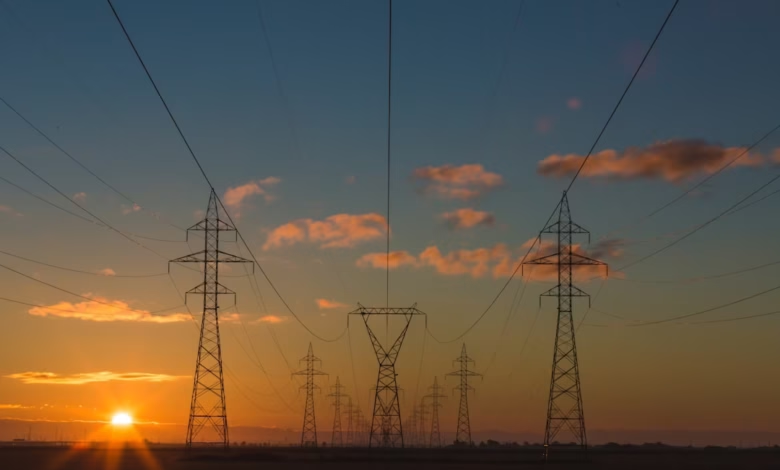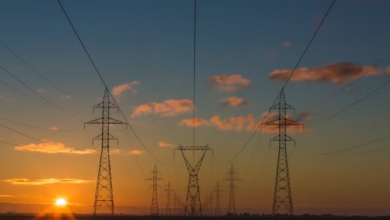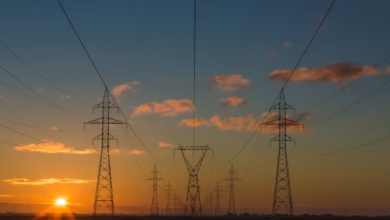Energy and Climate Change: Harnessing Energy Innovations for a Sustainable Future

The ongoing battle against climate change is one of the most pressing issues of our time, and the role of energy in this fight cannot be overstated. As global temperatures rise due to greenhouse gas emissions, the choice of energy sources becomes crucial in determining the future of our planet. This article delves into the multifaceted relationship between energy and climate change, focusing on how various energy sources, including fossil fuels, renewable energy, and nuclear energy, impact our environment. We will conduct a comparative analysis of these sources, highlighting the urgency of transitioning to greener alternatives like solar power, wind energy, and hydropower.
In addition to examining energy sources, we will explore cutting-edge innovations in energy efficiency and storage that are pivotal in driving the energy transition toward a sustainable future. Technologies such as smart grids, energy storage systems, and carbon capture solutions are reshaping how we think about energy consumption and distribution.
Moreover, understanding global energy trends and policies is vital for navigating the complex landscape of energy markets and investments. By analyzing energy exports and imports, as well as the implications of energy economics and energy security, we can better appreciate the dynamics at play in the fight against climate change. Join us as we uncover the critical role of energy in combating global warming and outline actionable strategies for a cleaner, greener future.
- 1. The Impact of Energy Sources on Climate Change: A Comparative Analysis of Fossil Fuels, Renewable Energy, and Nuclear Energy
- 2. Innovations in Energy Efficiency and Storage: Key Technologies Driving the Energy Transition Toward a Sustainable Future
- 3. Global Energy Trends and Policy: Navigating the Role of Energy Markets and Investments in Combating Climate Change
1. The Impact of Energy Sources on Climate Change: A Comparative Analysis of Fossil Fuels, Renewable Energy, and Nuclear Energy
The impact of various energy sources on climate change is pivotal in understanding how we can combat global warming effectively. Fossil fuels, which include coal, oil, and natural gas, are the most significant contributors to greenhouse gas emissions. When burned for electricity, transportation, and heating, these fuels release carbon dioxide (CO2) and other pollutants, exacerbating climate change. According to the International Energy Agency (IEA, 2021), fossil fuel combustion accounts for approximately 75% of global CO2 emissions, making a substantial shift away from these energy sources imperative.
In contrast, renewable energy sources such as solar power, wind energy, hydropower, and bioenergy offer a pathway to a more sustainable energy future. These green energy alternatives produce little to no emissions during operation, which is essential for reducing our carbon footprint. For example, the deployment of solar panels and wind turbines has surged due to technological advancements and decreasing costs, making them increasingly viable options in energy markets worldwide (IRENA, 2022). Moreover, energy storage solutions, such as batteries and pumped hydro, are crucial for integrating these intermittent renewable sources into the energy grid, ensuring reliability and energy security.
Nuclear energy also presents a low-carbon option in the energy transition. While it generates significant amounts of thermal energy with minimal greenhouse gas emissions, concerns regarding safety, waste management, and public perception can hinder its expansion. However, innovations in nuclear technology, such as small modular reactors and advancements in carbon capture, may improve its feasibility and public acceptance (World Nuclear Association, 2023).
As global energy trends shift, energy policy must adapt to encourage investments in renewable energy and innovative technologies. Energy efficiency measures, for example, can significantly reduce overall energy demand, thereby lessening the reliance on fossil fuels. The integration of smart grids and distributed energy systems can enhance energy transportation efficiency, enabling better management of energy imports and exports.
The role of hydrogen energy is also gaining attention as a versatile energy carrier that can supplement renewable sources, particularly in sectors challenging to decarbonize, such as heavy industry and transportation (including electric vehicles). As countries prioritize energy R&D and energy innovations, the focus on offshore energy resources, such as wind and tidal power, will likely expand, providing additional sustainable options.
In conclusion, the comparative analysis of fossil fuels, renewable energy, and nuclear energy illustrates the urgent need for a balanced approach to energy policy that prioritizes sustainability and climate change mitigation. By investing in energy efficiency, enhancing energy storage capabilities, and embracing new technologies, we can pave the way for a cleaner, more resilient energy future.
References:
International Energy Agency. (2021). CO2 Emissions from Fuel Combustion. Retrieved from https://www.iea.org/publications/freepublications/publication/co2-emissions-from-fuel-combustion-2021.html
International Renewable Energy Agency. (2022). Renewable Power Generation Costs in 2021. Retrieved from https://www.irena.org/publications/2022/Jun/Renewable-Power-Generation-Costs-in-2021
World Nuclear Association. (2023). Nuclear Power and the Environment. Retrieved from https://www.world-nuclear.org/information-library/current-and-future-generation/nuclear-power-and-the-environment.aspx
2. Innovations in Energy Efficiency and Storage: Key Technologies Driving the Energy Transition Toward a Sustainable Future
Innovations in energy efficiency and storage are critical to driving the energy transition toward a sustainable future. As the world grapples with climate change, the need to reduce reliance on fossil fuels and enhance the use of renewable energy sources has become paramount. Key technologies are emerging that not only improve energy efficiency but also facilitate the integration of green energy into our energy markets.
One of the most significant advancements in energy efficiency is the development of smart grids. These digital systems optimize electricity distribution, allowing for better management of demand and supply. By incorporating energy storage solutions, such as batteries and thermal energy storage, smart grids can ensure that excess energy generated from renewable sources like solar power and wind energy is efficiently stored and utilized when needed. This capability is essential for balancing intermittent renewable energy output and enhancing energy security.
Energy storage technologies, particularly in the realm of electric vehicles (EVs), are also transforming the energy landscape. With advancements in battery technology, EVs are becoming more efficient and cost-effective, making them an appealing alternative to traditional fossil fuel-powered vehicles. Moreover, the integration of EVs into the grid can act as a distributed energy resource, enabling vehicle-to-grid (V2G) solutions that support energy demand during peak periods.
Hydrogen energy is emerging as another promising innovation. As a versatile energy carrier, hydrogen can be produced from various sources, including renewable energy and bioenergy. Its potential for decarbonizing sectors such as transportation and industry makes it a key player in energy policy discussions aimed at achieving carbon neutrality. Additionally, advancements in carbon capture technologies are helping to mitigate emissions from existing fossil fuel infrastructure, thereby supporting a smoother transition to a low-carbon future.
Investments in energy R&D are crucial for sustaining this momentum. As global energy trends shift towards more sustainable practices, innovative solutions in energy transportation and offshore energy development will be essential. By fostering a robust energy innovation ecosystem, countries can enhance their energy exports and imports, ensuring a diversified and resilient energy supply that meets both current and future demands.
In conclusion, the innovations in energy efficiency and storage are pivotal in the fight against climate change. By leveraging these technologies, we can accelerate the energy transition, reduce our dependency on fossil fuels, and embrace a future where renewable energy takes center stage in the global energy economy.
3. Global Energy Trends and Policy: Navigating the Role of Energy Markets and Investments in Combating Climate Change
In the fight against climate change, understanding global energy trends and policies is essential for navigating the complex landscape of energy markets and investments. The transition from fossil fuels to renewable energy sources is at the forefront of this effort. Governments and organizations worldwide are increasingly recognizing the need to promote energy efficiency and invest in green energy technologies to mitigate global warming.
One of the most significant trends in recent years has been the shift towards renewable energy sources such as solar power, wind energy, and hydropower. These sources not only reduce greenhouse gas emissions but also enhance energy security by diversifying energy imports and exports. As countries strive to meet their climate commitments, investments in renewable energy are expected to rise, supported by favorable energy policy frameworks.
In parallel, innovations in energy storage and smart grids are revolutionizing how energy is managed and distributed. Energy storage solutions are crucial for integrating intermittent renewable sources like solar and wind, ensuring a reliable energy supply. Smart grids enhance energy efficiency and enable better demand response, allowing consumers to participate in energy markets actively.
Nuclear energy also plays a pivotal role in the energy transition, providing a stable and low-carbon energy source. While it may face public scrutiny, advancements in nuclear technology, such as small modular reactors and improved safety measures, are making it a viable option in the fight against climate change.
Carbon capture technologies are gaining traction as an additional strategy to reduce emissions from fossil fuel use. These innovations can help mitigate the environmental impact of thermal energy generation, allowing for a smoother transition while maintaining energy security.
As energy markets evolve, the importance of energy investments cannot be overstated. Governments and private sectors must prioritize funding for energy R&D to spur innovation in energy technologies, including hydrogen energy and bioenergy. By supporting distributed energy systems and electric vehicles, countries can further enhance their energy economics and reduce reliance on traditional fossil fuels.
In conclusion, navigating global energy trends and policies is crucial in combating climate change. By focusing on renewable energy, energy efficiency, and innovative technologies, we can create a sustainable energy future that addresses both environmental challenges and energy security. The journey towards a greener planet requires collective action and strategic investments in our energy infrastructure.
In conclusion, the role of energy in combating climate change is multifaceted and critical to achieving a sustainable future. As we have explored, the impact of different energy sources—fossil fuels, renewable energy, and nuclear energy—highlights the urgent need to transition from carbon-intensive fuels to cleaner alternatives. Renewable energy sources like solar power, wind energy, and hydropower are not only key players in reducing greenhouse gas emissions but also offer innovative solutions in energy efficiency and storage, essential for a resilient energy transition.
Innovations in energy technologies, such as smart grids, carbon capture, and energy storage systems, pave the way for enhanced energy security and reliability. Furthermore, the evolution of global energy trends and policies will shape the landscape of energy markets, guiding investments toward sustainable practices that promote energy economics and sustainability. As nations prioritize energy exports and imports in the context of climate change, the adoption of distributed energy systems and electric vehicles will play an increasingly important role in mitigating the impacts of global warming.
Ultimately, fostering a collaborative approach to energy research and development (R&D) is crucial in driving the transition toward green energy. By investing in energy innovations and embracing a diverse energy portfolio, including thermal energy and hydrogen energy, we can collectively forge a path to a more sustainable and climate-resilient world. As we continue to navigate the challenges of climate change, it is clear that the choices we make in energy policy and investments will define our collective future and the health of our planet.
References:
(Include your references following APA citation style here)





